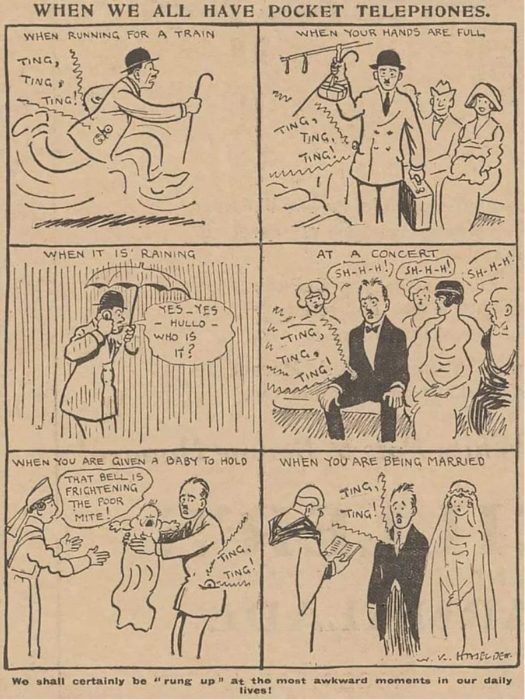Jun
10
2022
 In the original Terminator movie, the killer robot played by Arnold Schwarzenegger was covered in living human skin. In the context of the storyline, this was necessary for the terminator to travel back in time because only living matter could go through, no technology. As a movie device this accomplished two things. It allowed the robot to be portrayed throughout most of the film with a living actor (rather than expensive CG robot). Also, as a plot device it explained why the terminator and the protector sent to fight it did not bring back advanced weaponry with them.
In the original Terminator movie, the killer robot played by Arnold Schwarzenegger was covered in living human skin. In the context of the storyline, this was necessary for the terminator to travel back in time because only living matter could go through, no technology. As a movie device this accomplished two things. It allowed the robot to be portrayed throughout most of the film with a living actor (rather than expensive CG robot). Also, as a plot device it explained why the terminator and the protector sent to fight it did not bring back advanced weaponry with them.
Regardless of the purpose, the device introduced an intriguing concept for robotics – covering a humanoid robot in living skin to make it appear indistinguishable from a human. Living skin is a highly adapted external covering. It is an effective barrier to keep out unwanted invaders. It retains moisture very well, while being able to keep itself moist and pliable through sweat glands. It is also self-repairing to some extent. Skin also contains an array of sensors to detect temperature, vibration, touch, and pressure.
Not all robots need this kind of covering. Many do well with a hard covering, and rubber gripping surfaces serve fine. But there is an emerging field of soft robotics, which are better suited to interacting with humans and operating in spaces designed for humans. A soft covering for such robots is a critical component, with silicon being the current state-of-the-art for passive skin. However, development is under way for active, stretchable, smart artificial skin for soft robots. Fully soft robots also need soft electronics and actuators, and those are also being developed.
Continue Reading »
Jun
07
2022
 A recent editorial by Tauriq Moosa, a South African writer focusing on ethics, makes a cogent argument that skeptical activism is a moral necessity. I don’t know Tauriq and his connection to skepticism, if any, but he writes as if from a perspective outside the skeptical movement. Rarely do I encounter outside commentary on skepticism that isn’t cringeworthy in its cluelessness. Tauriq does a good job, although his commentary could be taken further (which, of course, I will do).
A recent editorial by Tauriq Moosa, a South African writer focusing on ethics, makes a cogent argument that skeptical activism is a moral necessity. I don’t know Tauriq and his connection to skepticism, if any, but he writes as if from a perspective outside the skeptical movement. Rarely do I encounter outside commentary on skepticism that isn’t cringeworthy in its cluelessness. Tauriq does a good job, although his commentary could be taken further (which, of course, I will do).
His core argument is that when it comes to skepticism of fraud and fakery, silence is not a (morally defensible) option. He makes an analogy to Semmelweis, who first discovered that if doctors would simply wash their hands before treating patients many lives could be saved. Knowing this, he had a moral imperative to try to convince the world of this fact. Likewise if a skeptic has good reason to believe that a treatment or practice is actively harmful, they have a moral imperative to try to convince others of this fact. Homeopathy, for example, is worthless. If you rely upon it to treat a non-self-limiting disease you are likely to suffer harm. He writes:
If you don’t think the skeptic movement is about saving lives and providing ammunition to protect yourself against charlatans, then you simply don’t know the numbers of preventable deaths – ‘preventable’ if the information had been accepted by the adults concerned.
He then goes on to confront a common response to this type of skeptical activism – rational adults can make their own decisions, so let them be. Tauriq addresses this by focusing on the notion of “rational”. He correctly points out that rational decision-making requires accurate information, and so providing that information is a service. He also points out that when children are involved adults have a responsibility for scientific due diligence when making decisions on their behalf.
Continue Reading »
Jun
06
2022
 Traffic jams cost the US economy an estimated $179 billion per year. That’s a pretty good incentive to invest in strategies to reduce the problem. Slow traffic is also a huge pain, causing significant stress and wasted time. (Remember the linear bias I wrote about recently, improving traffic speeds at the low end by avoiding jams has a huge effect on average driving speeds.) The causes of jams are various, including accidents and road construction, but some causes are “soft” in that they just happen due to driving patterns. Phantom traffic jams is one phenomenon, caused mainly by tailgating. When one driver slows even a little, the car behind them has to slow a bit more, and this continues until traffic stops for no apparent reason. Traffic light patterns is another cause. Hard causes need hard fixes, like expanding lanes and having adequate accident response infrastructure. But the soft causes can be mitigated by smarter driving and traffic control.
Traffic jams cost the US economy an estimated $179 billion per year. That’s a pretty good incentive to invest in strategies to reduce the problem. Slow traffic is also a huge pain, causing significant stress and wasted time. (Remember the linear bias I wrote about recently, improving traffic speeds at the low end by avoiding jams has a huge effect on average driving speeds.) The causes of jams are various, including accidents and road construction, but some causes are “soft” in that they just happen due to driving patterns. Phantom traffic jams is one phenomenon, caused mainly by tailgating. When one driver slows even a little, the car behind them has to slow a bit more, and this continues until traffic stops for no apparent reason. Traffic light patterns is another cause. Hard causes need hard fixes, like expanding lanes and having adequate accident response infrastructure. But the soft causes can be mitigated by smarter driving and traffic control.
This is where artificial intelligence (AI) enters the picture. Both of these significant causes of slowed traffic, better driving behavior and smarter traffic light control, can be improved with the application of AI. With respect to phantom jams, the solution seems to be to apply what researchers are calling bilateral control – this means that drivers should space themselves out so that they are equal distance between the car in front and behind them, rather than riding the tail of the car in front of them. Simulations show that adopting this driving pattern can reduce phantom traffic jams by 50%.
How can we implement this strategy? Driver education may help a little, but it is difficult to get a large number of people to make a behavior change, and the benefits really only occur when high percentages of drivers follow this pattern. Some level of driver assist is therefore needed. Short of full self-driving capability, it’s possible to enact bilateral control with a driver assist tweak to cruise control. Even just providing feedback to the driver to back off to an optimal distance from the car in front of them could work. This is a relatively simple fix that can be rapidly implemented.
Continue Reading »
Jun
03
2022
 Writing a book forces you to engross yourself, almost obsessively, in one topic. That’s why I have been thinking about futurism (predicting what the future will bring) for the past year. Even though the book is finished (The Skeptics Guide to the Future, coming out September 27th) something relevant to futurism comes to my attention almost every day. I find particularly interesting past attempts at futurism, especially those far in the past. First, the farther back you go the more amusing futurism becomes, and second enough time has passed to judge how accurate their predictions were.
Writing a book forces you to engross yourself, almost obsessively, in one topic. That’s why I have been thinking about futurism (predicting what the future will bring) for the past year. Even though the book is finished (The Skeptics Guide to the Future, coming out September 27th) something relevant to futurism comes to my attention almost every day. I find particularly interesting past attempts at futurism, especially those far in the past. First, the farther back you go the more amusing futurism becomes, and second enough time has passed to judge how accurate their predictions were.
My brother and co-author Bob just sent me this nugget – a cartoon from 1919 imagining what it would be like if we all had pocket telephones. This was first published in The Mirror and authored by W. K. Haselden. I love it because it is both prescient and naive at the same time. The cartoon focusses on the inconvenience of having a phone in your pocket that can ring at awkward times. We have all likely experienced most if not all of these situations. I was actually in a wedding where one of the groomsman’s phones went off (it was an early Droid with the characteristic “droid” ringtone).
I understand that this is a cartoon, not an essay, and probably the point was to focus on awkward moments because they are funny. But still the author had to imagine how a new technology would influence our lives and had to glimpse the future, and therefore it is a legitimate (if limited) piece of futurism. You probably immediately recognized one of the most common “futurism fallacies”, as we call them in our book. The author imagines the people of his day, complete with 1919 fashion, living in the future when “pocket” phones are available.
Continue Reading »
Jun
02
2022

On the most recent season of Love Death and Robots (which is excellent, btw) the first episode sees the return of the three robot explorers from previous seasons. They are looking over the remains of human civilization trying to figure out what went wrong. It’s a clever and funny commentary on some of our more irrational social ills and how fragile civilization can be. And while the apocalypse is primarily a plot device for survivalist and zombie movies, it is a serious issue and something we can plan for.
No one wants to think about the worse-case scenario, or confront it as a real possibility. There are survivalists and preppers who seem to romanticize the idea – if you put so much time and effort into preparing for something, it can be seen as anti-climactic if it never happens. But it does make sense to prepare for contingencies that you truly hope never happen. Also, preparing for a global catastrophe should in no way detract from our attempts at preventing catastrophe. It should not be a form of giving up. Rather, we’re just hedging our bets. We should spend the majority of our efforts preventing disaster, but just in case.
One example of this is the Svalbard global seed vault. In case there is some agricultural apocalypse, such as a blight, or some other collapse of global civilization, a large stock of seeds of all agriculturally important plants are kept preserved in the vault. We could use this as an emergency supply to reboot our agricultural system. Hopefully we will never need to crack open the vault (metaphorically) but in case we do, it’s nice to know that it’s there.
A recent paper (expanding on prior research) explores the practicality and utility of civilization refuges as a hedge against global catastrophe. The authors argue that we should at least think about which locations in the world would be most resilient in the face of, for example, a global pandemic. What if we have a pandemic similar to COVID except ten times or even a hundred times more deadly. COVID is now at 6.3 million global deaths. What if it were 63 million, or 630 million? These are plausible scenarios, and we would be foolish not to take reasonable steps to prevent them, mitigate them, and prepare for them. Again, prevention is the best option, but we need to prepare for failure leading to a worst-case scenario.
Continue Reading »
 In the original Terminator movie, the killer robot played by Arnold Schwarzenegger was covered in living human skin. In the context of the storyline, this was necessary for the terminator to travel back in time because only living matter could go through, no technology. As a movie device this accomplished two things. It allowed the robot to be portrayed throughout most of the film with a living actor (rather than expensive CG robot). Also, as a plot device it explained why the terminator and the protector sent to fight it did not bring back advanced weaponry with them.
In the original Terminator movie, the killer robot played by Arnold Schwarzenegger was covered in living human skin. In the context of the storyline, this was necessary for the terminator to travel back in time because only living matter could go through, no technology. As a movie device this accomplished two things. It allowed the robot to be portrayed throughout most of the film with a living actor (rather than expensive CG robot). Also, as a plot device it explained why the terminator and the protector sent to fight it did not bring back advanced weaponry with them.
 A
A  Traffic jams cost the US economy an estimated
Traffic jams cost the US economy an estimated  Writing a book forces you to engross yourself, almost obsessively, in one topic. That’s why I have been thinking about futurism (predicting what the future will bring) for the past year. Even though the book is finished (
Writing a book forces you to engross yourself, almost obsessively, in one topic. That’s why I have been thinking about futurism (predicting what the future will bring) for the past year. Even though the book is finished (





